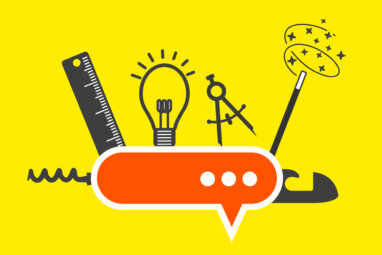Managing the Total Customer Experience
Offering products or services alone is no longer enough: Organizations must provide their customers with satisfactory experiences. Competing on this dimension means orchestrating all the “clues” that people detect in the buying process.
Topics

In recent years, managers have become increasingly aware of the need to create value for their customers in the form of experiences. Unfortunately, they have often proceeded as if managing experiences simply meant providing entertainment or being engagingly creative. The issue is far more complex than that.1 Restaurants that put photographs of movie stars on their walls and retailers that hang motorcycles from their ceilings — to give just two examples — will ultimately be disappointed in customers’ responses if they fail to make such objects part of a well-conceived, comprehensive strategy of managing the customer’s experience.
To carry out such a strategy, companies must gain an understanding of the customer’s journey — from the expectations they have before the experience occurs to the assessments they are likely to make when it’s over. Using that knowledge, companies can orchestrate an integrated series of “clues” that collectively meet or exceed people’s emotional needs and expectations. The internalized meaning and value the clues take on can create a deep-seated preference for a particular experience — and thus for one company’s product or service over another’s.
An organization’s first step toward managing the total customer experience is recognizing the clues it is sending to customers. Companies that sense trouble — in the form of falling customer-satisfaction scores or new competitive threats — would do well to consider undertaking the focused, comprehensive management of all the clues that give off signals to people. Fortunately, specific tools are available to help organizations with this process. And, as we’ll show, some companies are using the tools of customer-experience management to create a competitive advantage that is difficult to match.
Recognizing the Clues
When we talk about clues, we don’t mean the snippets of information or bits of physical evidence that only crime-novel detectives can find. In fact, the clues that make up a customer experience are everywhere, and they’re easily discerned. Anything that can be perceived or sensed — or recognized by its absence —is an experience clue. Thus the product or service for sale gives off one set of clues, the physical setting offers more clues, and the employees — through their gestures, comments, dress and tones of voice — still more clues. Each clue carries a message, suggesting something to the customer. The composite of all the clues makes up the customer’s total experience.
References (3)
1. Readers interested in the application of axiology (theory of value) to consumer experiences will find a comprehensive discussion by M. Holbrook, “The Nature of Customer Value,” in R. Rust and R. Oliver, eds., “Service Quality: New Directions in Theory and Practice” (Thousand Oaks, California: Sage, 1994). J. Deighton describes customers as theatergoers and offers an original approach to turning performances into experiences in “The Consumption of Performance,” Journal of Consumer Research 19 (December 1992): 362–372. Also of interest are R. Chase and S. Dasu, “Want To Perfect Your Company’s Service? Use Behavioral Science,” Harvard Business Review (June 2001): 78–84. B.J. Pine and J. Gilmore, “The Experience Economy: Work Is Theater and Every Business a Stage” (Boston: Harvard Business School Press, 1999); B. Schmitt, “Experiential Marketing: How To Get Customers To Sense, Feel, Think, Act and Relate to Your Company and Brands” (New York: Free Press, 1999); S. Haeckel, “Adaptive Enterprise: Creating and Leading Sense-and-Respond Organizations” (Boston: Harvard Business School Press, 1999); L.L. Berry, “Discovering the Soul of Service” (New York: Free Press, 1999); and D. Travis, “Emotional Branding” (Roseville, California: Prima Venture, 2000). In “The Emotional Brain” (New York: Simon & Schuster, 1996), neurobiologist Joseph Ledoux provides experimental evidence that humans have two neurologically different categories of thought: rational and emotional. For a synthesis of research in environmental psychophysiology, see H.R. Rubin and A.J. Owens, “Status Report: An Investigation To Determine Whether the Built Environment Affects Patients’ Medical Outcomes” (Lafayette, California: The Center for Health Design, 1996).
2. L. Carbone and S. Haeckel, “Engineering Customer Experiences,” Marketing Management 3 (winter 1994): 8–19.




